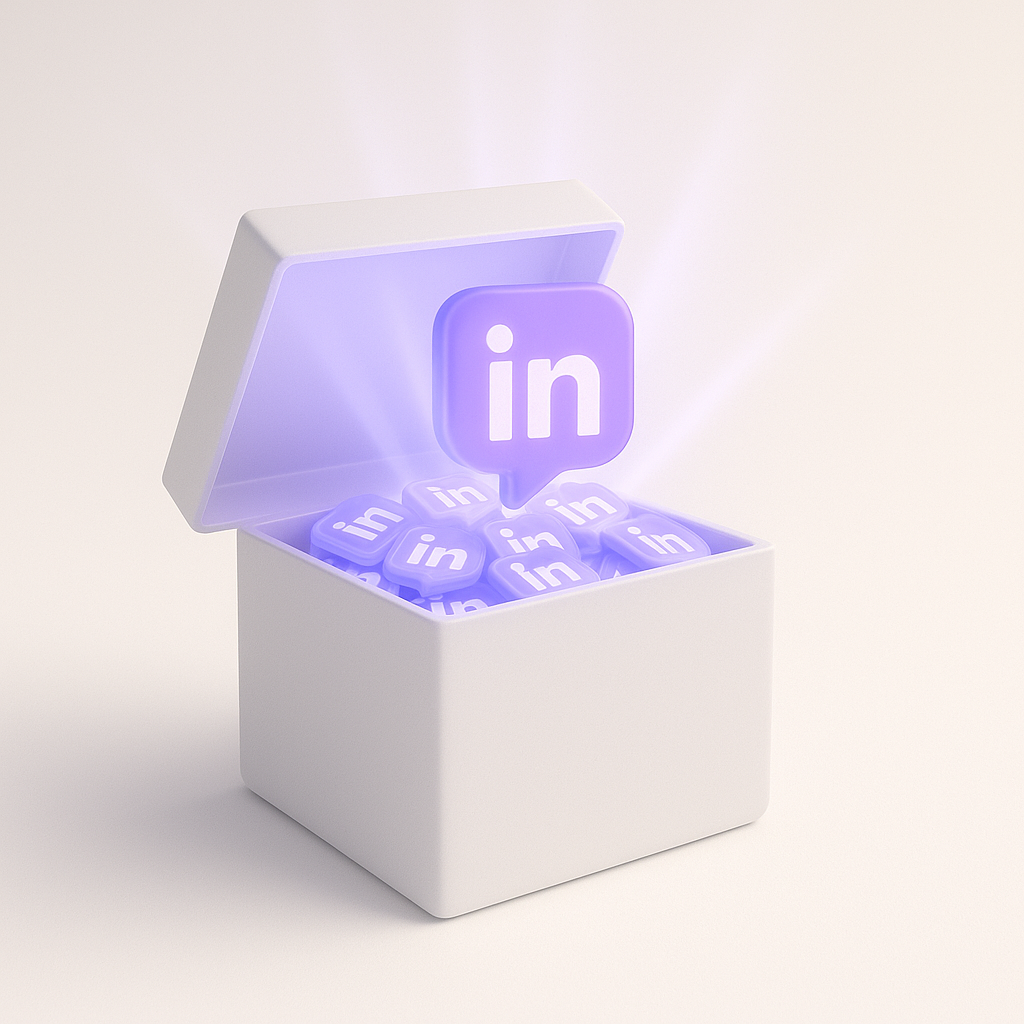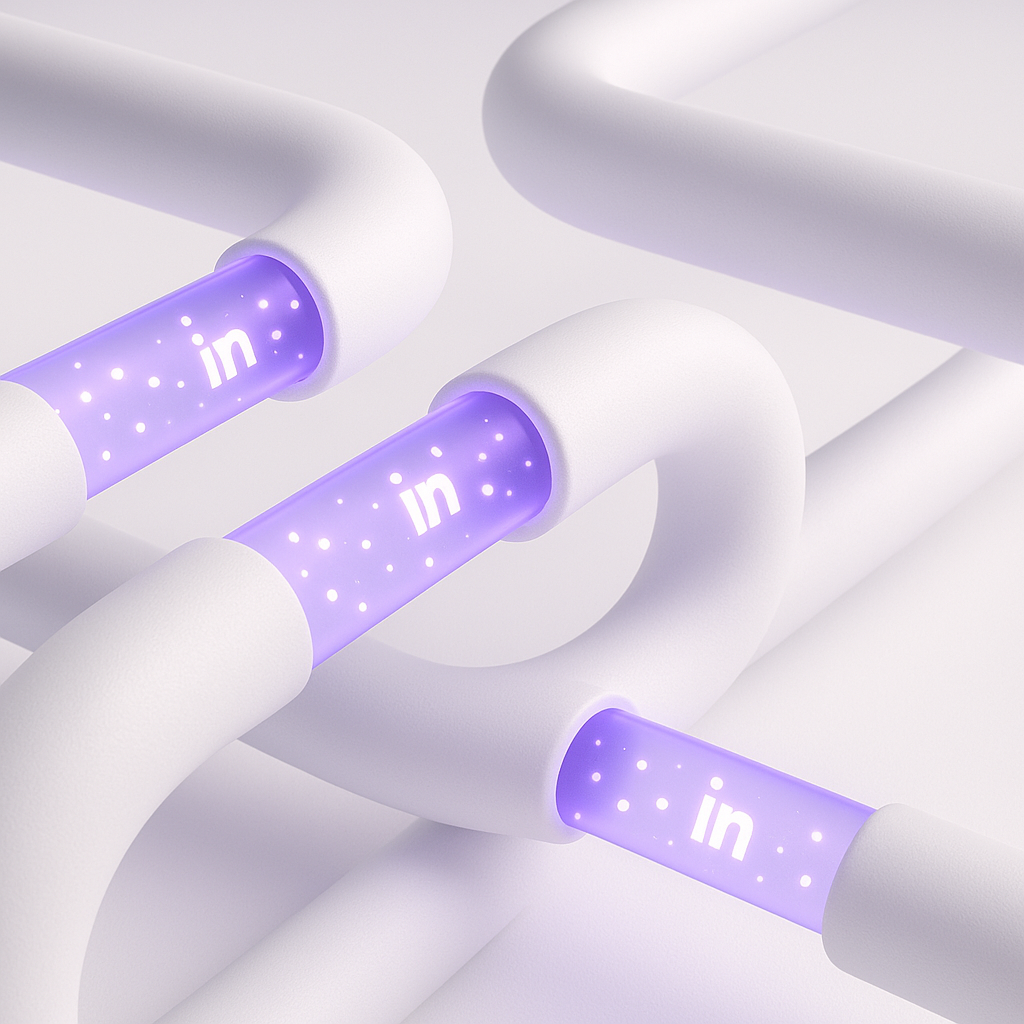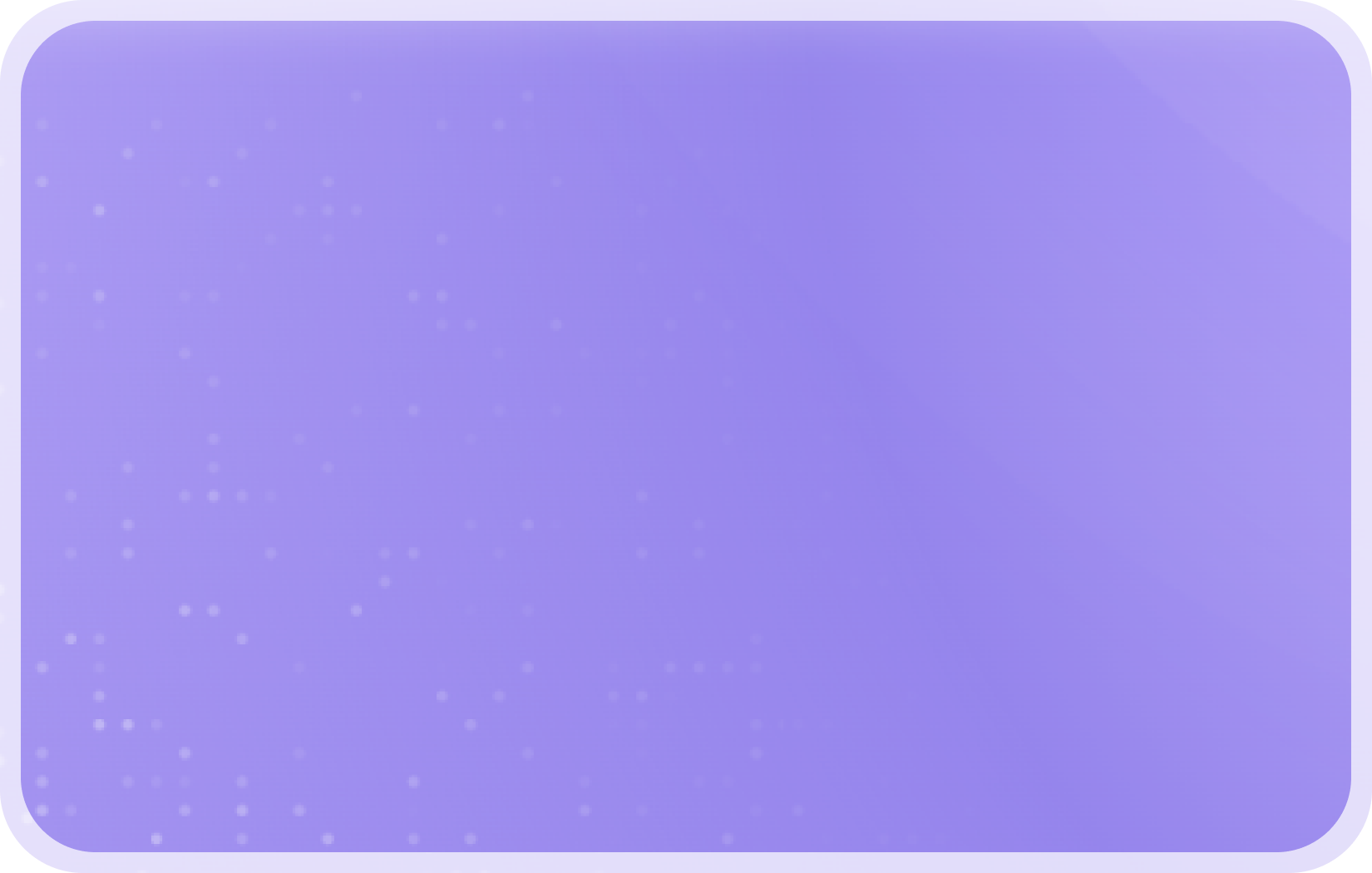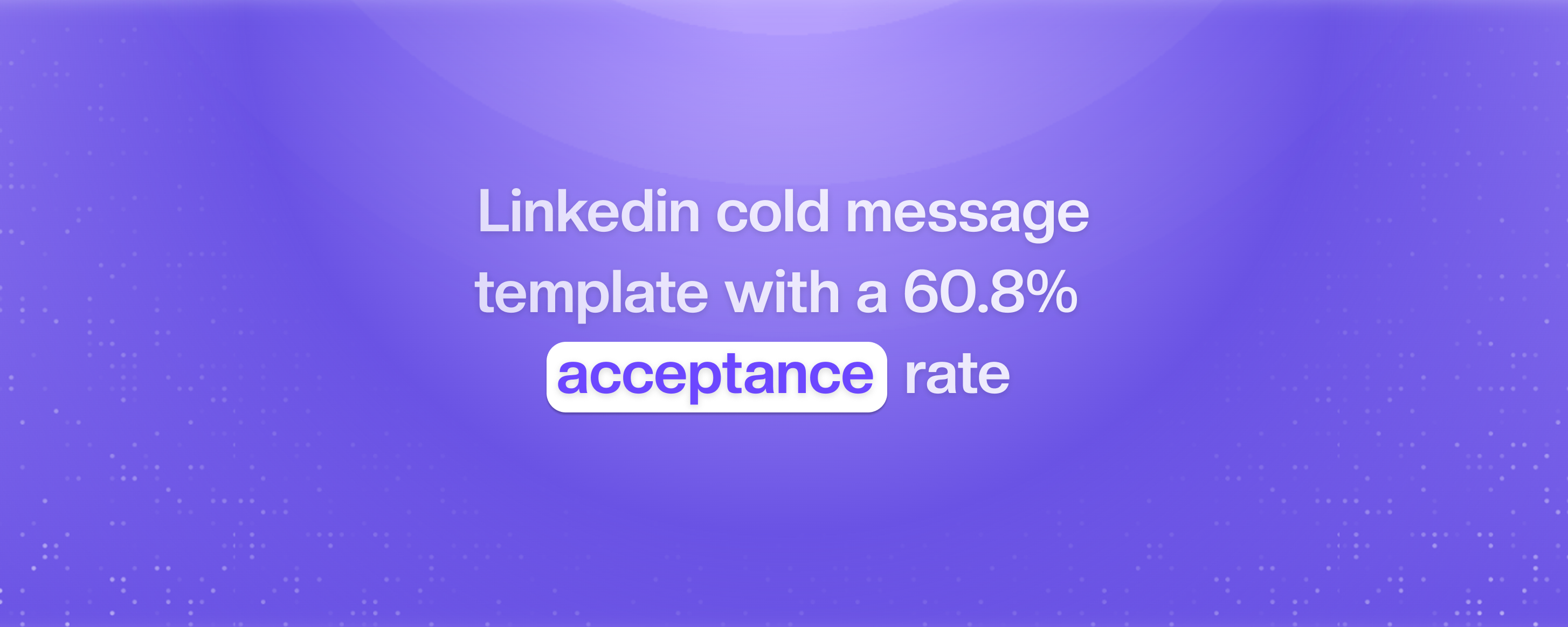5 Expert tips for closing a cold network message on LinkedIn
Crafting the perfect closing out a cold networking message can be challenging. On LinkedIn especially, where first impressions matter, your closing line often determines whether your prospect responds or ignores your outreach. It’s crucial to leave a lasting impression.
A well-crafted closing cold network message not only increases your chances of receiving a reply but also sets the tone for future interactions. Networking etiquette plays a vital role in this process. It ensures your message is both professional and personable.
Here are the five expert tips we’ll cover in this guide:
- Understanding networking etiquette – respect, timing, and tone matter.
- Crafting effective closing lines – how to phrase your message so it invites replies.
- Personalizing your message – tailoring closings based on interests and connections.
- Creating a sense of urgency – encouraging timely responses without pressure.
- Offering value in your closing – giving prospects a reason to keep the conversation going.
Understanding how to initiate conversations is just the beginning, but closing them effectively is where the magic happens. Personalization is key. Tailoring your message to the recipient can make all the difference.
A strong closing line can reinforce your personal brand, express gratitude, and offer value. Timing matters as well: knowing when to follow up can drastically improve your LinkedIn outreach results.
Understanding networking etiquette
In networking, etiquette ensures interactions are smooth and effective. It sets the foundation for professional exchanges on LinkedIn and beyond.
Respect and courtesy form the backbone of networking etiquette. They help in building trust with new contacts. Your message should reflect an understanding of the recipient's time and position. This shows that you value their involvement.
Key aspects of LinkedIn networking etiquette include:
- Respectful communication
- Timely follow-ups
- Balancing professionalism with friendliness
Misunderstanding etiquette can lead to missed opportunities. It can hinder your professional goals, especially if you’re hitting connection limits. If you’re not sure where the line is, see our breakdown of the Weekly Invitation Limit on LinkedIn.
Importance of Respectful Communication
Respectful communication builds rapport from the start. On LinkedIn, this means acknowledging expertise, using polite language, and being concise.
Elements of respectful communication:
- Acknowledge the recipient’s expertise
- Use polite, professional tone
- Stay brief but clear
This approach fosters a positive atmosphere for future exchanges. It establishes a strong foundation for potential partnerships.
Timing Your Follow-Up Appropriately
Timing is crucial in networking follow-ups. A well-timed message can strengthen your connection.
Strategies for appropriate follow-up timing:
- Wait a reasonable time (around one week)
- Consider time zone differences
- Respect the recipient’s schedule
Using a LinkedIn automation tool like ReachBoost can help you schedule respectful follow-ups without spamming.
Balancing Professionalism with Warmth
While professionalism is important, adding warmth makes your message genuine. Balance is key to effective networking.
Tips for balancing professionalism and warmth:
- Use a friendly tone without losing formality
- Include a personal compliment
- Express genuine interest in future conversations
This balance helps you foster meaningful LinkedIn connections.

Crafting Effective Closing Lines
Closing lines are critical in closing out a cold networking message. They can determine whether you receive a reply or get left on read.
A strong closing encourages further conversation. It leaves a positive impression on the recipient. Creating effective closing lines involves personalization, open-ended engagement, and a clear call-to-action.
Key elements for impactful closing lines:
- Personalization
- Open-ended engagement
- Call-to-action
Research helps craft a closing that resonates. It involves understanding the recipient's interests and aligning with their professional goals.
Using Open-Ended Questions
Open-ended questions prompt recipients to respond thoughtfully:
- “What are your thoughts on this?”
- “How do you see this evolving?”
- “Could we discuss this further?”
Using open-ended questions fosters dialogue and encourages responses, a proven tactic in any LinkedIn Cold Message Template.
Encouraging a Conversational Tone
LinkedIn isn’t email, it’s a professional social network. A conversational closing humanizes your message.
Tips for a conversational tone:
- Use direct, simple language
- Add a friendly anecdote
- Show genuine interest
This makes your message inviting instead of robotic.
Inviting Further Engagement Without Pressure
Avoid being pushy. Instead, invite engagement with soft closings:
- “Feel free to share your thoughts.”
- “I’d love to hear your perspective.”
- “Let me know if you’d like to continue the discussion.”
This creates a relaxed atmosphere for further interaction.

Personalizing Your Message
Personalization is the most powerful lever in closing cold network messages. It shows you’ve invested time in the recipient and dramatically boosts response rates.
Personalization goes beyond using a first name. It’s about mentioning specifics, shared interests, or mutual connections.
Key personalization strategies:
- Research the recipient’s background
- Reference shared interests
- Acknowledge mutual connections
See our post on B2B Prospecting Tools for practical ways to scale personalization without losing authenticity.
Researching the Recipient’s Background
Check their LinkedIn profile, role, and recent posts. Mentioning something current makes your message timely and relevant.
Steps for effective research:
- Review their LinkedIn profile
- Explore their company website
- Search for recent mentions in the news
This makes your closing line more credible.
Tailoring Based on Shared Interests
Shared interests create a natural bridge. Examples include:
- Industry trends or challenges
- Events both of you attended
- Similar educational paths
Explicitly mentioning these interests validates your connection.
Highlighting Mutual Connections
A mutual connection warms up your outreach instantly. Mentioning a shared contact fosters trust and credibility.
Example: “I noticed you’re also connected with [[mutual_contact]], they spoke highly of your work.”

Creating a Sense of Urgency
Urgency in a closing cold networking message nudges recipients to prioritize your request. It should be subtle, never aggressive.
Employing Time-Sensitive Language
Examples:
- “This week, let’s discuss…”
- “By Friday, could we align on this?”
- “I’m available in the next few days…”
This signals importance without being forceful.
Setting Clear Expectations
Make your next step obvious:
- Suggest a specific time for a call
- Mention your preferred channel
- Give a clear timeframe
This clarity reduces hesitation and keeps conversations moving.
Gentle Reminders of Limited Opportunities
Scarcity creates urgency:
- “We’re opening just a few beta spots next month.”
- “Happy to share results from our pilot project before we publish them.”
These cues make your outreach more compelling.

Offering Value in Your Closing
The strongest way to close a cold networking message is by offering value. When prospects see potential benefit, they respond.
Value can be direct (resources, case studies) or implied (collaborations, introductions).
Suggesting Collaborations
Examples:
- “Would you be open to co-hosting a short LinkedIn session?”
- “Maybe we can exchange outreach tactics, always happy to share what works for us.”
Sharing Resources
Offer something useful:
- Industry reports
- Case studies
- Blog posts like our guide on the LinkedIn Social Selling Index
By sharing instead of asking, you build goodwill.
Focusing on Mutual Benefits
Mutual benefit is the foundation of networking. Examples:
- “We could both benefit from exchanging notes on LinkedIn outreach.”
- “I’d be glad to introduce you to others in my network.”
This transforms your message into an opportunity for collaboration.
Conclusion: Mastering the Cold Networking Message Close
Mastering the art of closing out a cold networking message means blending etiquette, personalization, urgency, and value into one or two thoughtful sentences. Done right, your closings won’t feel like an ending, but rather the start of a meaningful LinkedIn connection.
To recap:
- Follow LinkedIn etiquette and respect your prospect’s time.
- Craft closing lines that spark conversation.
- Personalize your approach with research and connections.
- Use subtle urgency to inspire timely replies.
- Offer value to make your message irresistible.
Want to improve your LinkedIn outreach even more? Check out these related guides:
- LinkedIn Cold Message Template
- Weekly Invitation Limit on LinkedIn
- LinkedIn Social Selling Index
- LinkedIn Auto Connect
- B2B Prospecting Tools
And if you want to scale your outreach while keeping it personal, explore ReachBoost a LinkedIn automation tool built for smarter networking.

.svg)
.svg)



.svg)
.svg)
.svg)







.svg)

.svg)